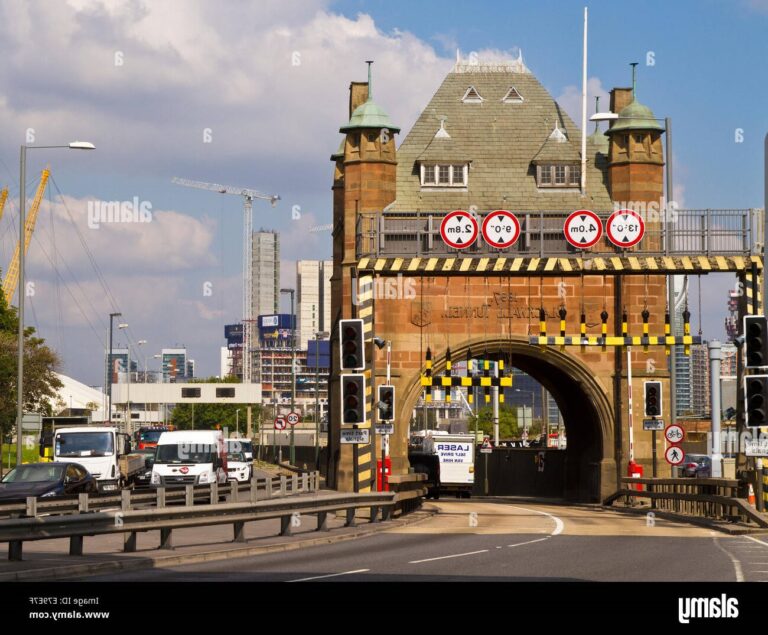Introduction
The Blackwall Tunnel is an iconic part of London’s transport infrastructure, playing a crucial role in connecting the city’s bustling areas. Opened in 1967, it has since become a key route for motorists traveling across the River Thames. In this blog post, we’ll dive into the history, significance, and current relevance of the Blackwall Tunnel, shedding light on why this tunnel is so much more than just an underground passage.
A Brief History of the Blackwall Tunnel
The Blackwall Tunnel was constructed to address the increasing traffic demands in London during the mid-20th century. Prior to its construction, crossings over the Thames were limited and often congested. The tunnel’s construction began in the early 1960s, and it was officially opened by Queen Elizabeth II in 1967.
Spanning approximately 1.5 miles (2.4 kilometers), the Blackwall Tunnel was designed to alleviate traffic congestion in London’s East End. It consists of two parallel tunnels: one for northbound traffic and the other for southbound.
read more https://bignewstoday.co.uk/
Why the Blackwall Tunnel is So Important
- Traffic Flow and Efficiency: The Blackwall Tunnel significantly improves traffic flow across the River Thames. It offers a crucial link between the Docklands area and the southern parts of London, making it an essential route for both local and long-distance drivers.
- Economic Impact: By facilitating smoother transport routes, the Blackwall Tunnel supports the local economy and businesses. The ease of access it provides is vital for the commercial operations in the surrounding areas, including the Canary Wharf financial district.
- Historical Significance: Beyond its functional role, the Blackwall Tunnel is a part of London’s rich transport heritage. It represents a period of rapid expansion and modernization in the city’s infrastructure.
Challenges and Developments
Like many major transport structures, the Blackwall Tunnel has faced its share of challenges. Traffic congestion and maintenance issues have been ongoing concerns. In recent years, there have been several updates and refurbishments aimed at improving safety and efficiency.
One significant project is the installation of a new ventilation system to enhance air quality within the tunnels. Additionally, there are ongoing efforts to address traffic flow and reduce congestion, including proposed changes to tolling and lane management.
The Blackwall Tunnel in Modern Times
Today, the Blackwall Tunnel continues to be a vital part of London’s transport network. It is used by thousands of vehicles daily, ranging from commuters to freight transport. The tunnel’s strategic importance means that it remains a focus for infrastructure improvements and traffic management strategies.
The Blackwall Tunnel is also part of the larger conversation about urban transport challenges. As London grows and evolves, so too does the need for efficient and sustainable transport solutions. The Blackwall Tunnel’s role in this evolving landscape highlights its enduring significance.
Fun Facts About the Blackwall Tunnel
- Construction Feat: During its construction, the Blackwall Tunnel was one of the largest bored tunnels in the world.
- Traffic Volume: The tunnel handles over 70,000 vehicles per day, making it one of the busiest road tunnels in the UK.
- Cultural References: The Blackwall Tunnel has appeared in various films and TV shows, becoming a recognizable feature of London’s urban landscape.
Conclusion
The Blackwall Tunnel is more than just an underground passage; it is a symbol of London’s commitment to addressing transportation challenges and improving connectivity. As a crucial link in the city’s transport network, it plays a significant role in the daily lives of thousands of Londoners and visitors alike.
